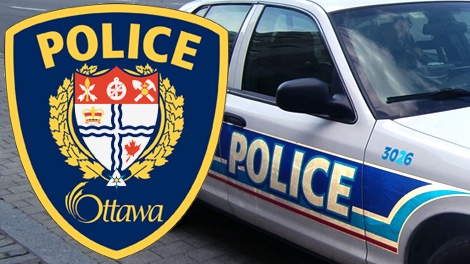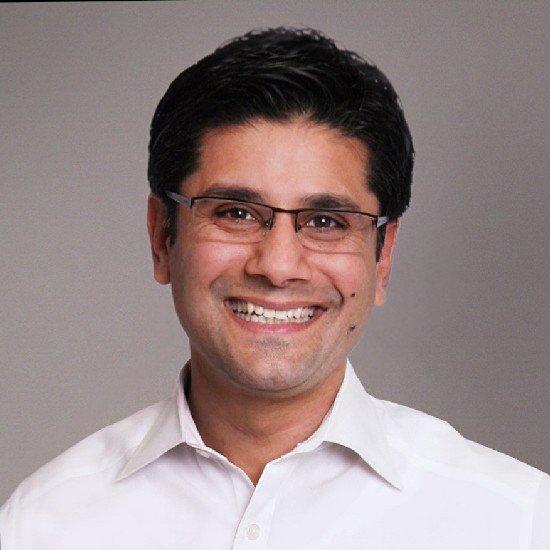
Police State or State of Police?
By: Dan Donovan & Claire Tremblay
A 27-year-old theatrical make-up artist was walking along Rideau Street, Ottawa in September 2008 when she was stopped by police. Officers ran her name through their database and let her go when nothing turned up. When she then inquired as to why she'd been stopped, she was arrested for “public intoxication”. Police took her into custody. She was stripsearched, her underwear was cut off with scissors and she was placed semi-naked in soiled clothing in a police cell for three hours. The woman had been out on the town with friends.
In another case, a reporter was stripped of her press pass at a political protest. Police, she alleges, threatened her with gang rape. This, police allegedly informed her, would teach her a lesson – keep reporting and you’ll pay the price.
At the same event, a man alleged police pushed him to the ground and handcuffed him. An amputee, the man alleged police pulled off his leg and told him to hop to the police van. He refused. His leg was confiscated by police as a weapon. He was arrested.
These are not cases from Iran, Saudi Arabia, Bahrain Syria, or Mexico. Welcome to Canada in the first decade of the new millennium. The Canadian citizen referred to in the first paragraph was Stacy Bonds of Ottawa. Her case is well known because the video of her being beaten went viral on the internet. The other two individuals, Amy Miller of the Dominion and Alternative Media Centre and Revenue Canada employee John Pruyn alleged they were beaten at the G20 protests.
The allegations are shocking. But it gets worse,.Canada has the dubious reputation of being one of the few Western countries to fire a weapon at a child. Worse, it has happened twice in 12 months. In April 2011, in Prince George, British Columbia, Canadian police fired a stun gun at an 11-year-old boy. The outside police force that conducted the investigation won’t reveal the most basic details about what happened. The case raised questions about why “trained police officers” would need to use the weapon on a child. The boy is believed to be the youngest person ever to be stunned with a police Taser in Canada. An “outside investigation” by the West Vancouver Police Department did little to address the controversy, other than to conclude the officers involved didn't break the law. West Vancouver police Chief Peter Lepine reported: “My team spent much of this spring and summer interviewing witnesses, collecting and analyzing evidence and consulting with those in the legal profession as well as subject matter experts in topics like police use of force. We have concluded that the actions of the officers involved did not violate the Criminal Code of Canada and we are not recommending charges.” Few details about the confrontation have ever been released. Police have never said whether the boy was armed or if he was attacking or threatening the officers at the time. It was later reported that the boy had serious mental issues and was holding a pen when tasered and not a knife as police had reported. Months later, in September 2011, in London, Ontario another 11-year-old boy was tasered in the head by a city of London Police Sergeant. A video of the incident shows the Sergeant walking towards an altercation and firing his Taser without warning at and knocking the boy unconscious. Before any investigation, London Police Chief Brad Duncan issued a terse statement saying the sergeant was justified in deploying the Taser without giving a verbal warning. The national standard for Taser use in Canada is that Tasers are to be used only when an officer’s life or another person’s life is in immediate danger.
The RCMP have had so many complaints against them in the past decade for improper behavior and incompetence that the Canadian public is no longer confident in the leadership, management and training levels of its once hallowed national police force. In 2010, former RCMP Commissioner Bill Elliottt had to get the Minister of Public Safety to intervene to stop an internal mutiny against him by senior RCMP officers who said he needed anger management training. Elliottt was sent to Texas on the taxpayer’s dime to take an anger management course. Elliottt, commissioner since July 2007, finally stood down this summer.
In another incident, the B.C. Civil Liberties Association is calling for an independent investigation into allegations an RCMP officer in Williams Lake, B.C., assaulted a 17-year-old girl. Jamie Haller was repeatedly punched in the face by an RCMP constable while she was handcuffed in the back of a police car. The incident happened on Sept. 10, 2011 after Haller herself had called the RCMP for assistance. Her mom Martina told local media that “I saw Jamie on the ground, crying and handcuffed and I got out and ran towards her. She was having a panic attack. She is very small and has never been in trouble with police before.” Jamie Haller claims she was mistakenly arrested and was kicking at the inside of the car windows trying to get the attention of her mom, who was nearby. Martina Jeff said she looked at the cruiser and saw the constable “put his whole upper body in the car and started punching… When I looked in the car I saw my daughter. Her face started swelling really bad. There was blood coming down on each side of her mouth. She was handcuffed, with her hands behind her back.” Haller was released the next morning without charge and alleges she did not receive any medical attention. RCMP Sgt. Warren Brown said the accounts of police officers on the scene differ dramatically from Haller’s account and police are recommending the teen be charged with assaulting a police officer.
Then there’s Ashley Smith. Sent to a youth detention centre in New Brunswick for a one-month sentence at 15-years-old, Ashley Smith came out of the centre four years later in a body bag. Prior to Ashley’s suicide at age 19, she had been placed in isolation and body restraints for years. The reason Smith was initially detained? She tossed crabapples at a mail carrier. Smith points to systemic problems from arrest to incarceration.
What is happening to the state of our police? The primary role of the police is to protect the public interest, not protect each other or cover for each other in the case of wrongdoing. Key to the effectiveness of any police force is strong leadership, competence and good training of police constables. Leadership, training, good judgment and common sense seem to be missing from the RCMP, Ottawa Police and other police forces across Canada. Police forces are better and communities stronger when they know serious allegations against police will be investigated fully, promptly and impartially and that if wrongs are committed, police will be dealt with in accordance with the law.
Where has this alleged police aggression sprung from and what is the extent of it in Canada? How do we stack up internationally? No one knows for sure. And that’s because no one is “officially” counting. Police services, according to a University of Toronto criminology report, “do not routinely release official statistics on police shootings or other use of force incidents.” The report, Police Use of Force in Ontario: An examination of Data from the Special Investigations Unit Final Report conducted for the Ipperwash Inquiry, adds research on police violence is “almost impossible to conduct because there is an informal ban on the release of any type of information that breaks down criminal justice statistics…”
In the absence of facts, there is perception. And if media reports are to go by, multiple cases of police misjudgment emerge. This includes using force when force is not necessary, breaching the Charter Rights of Canadians, questioning the decisions of judges in cases where police are found culpable of criminal conduct and conducting strip searches when they are not permissible. Then there are police chiefs who are not always providing the best example to officers under their command. From coast to coast to coast, there are cases of misjudgment all on the public record.
First, look what happened at the G20. People were crammed up in wire holding pens and female journalists covering the event alleged sexual assault by police. Not to be forgotten is G20 protestor Adam Nobody. Nobody claims police kicked him in the face after a police officer asked him his name – and he gave it.
Then there is the 2007 now legendary case of Polish immigrant Robert Dziekanski who was tasered to death by the RCMP at Vancouver International Airport. Police fired at Dziekanski five times (even after handcuffing him). A report released in June 2010 concluded the RCMP weren’t justified in using a Taser and that officers misrepresented their actions to investigators. Since Dziekanski’s death, the RCMP allows officers to use Tasers only when risk of bodily harm or death is imminent.
In Eastern Canada, a police officer in Labrador showed poor judgment by taking the law into his own hands. In May 2009, Constable James Woodrow, who was off duty at the time, had drinks with a woman. They went back to his home. She refused to leave. His response? Put her in the police lock up. The constable was charged with assault and forcible confinement.
Of all cities in Canada, the record of the Ottawa Police force under current Chief Vern White seems to be one of the worst. Ottawa Police have the lowest clearance rate among Ontario’s 17 largest police departments at
31 per cent, putting them at the bottom of the pack among Ontario’s largest police services when it comes to solving crimes. (Police Resources in Canada Statistics Canada report). The clearance rate is a percentage indicating how many crimes among all those reported annually to police are solved. In addition, Ottawa is the second most investigated force in Ontario for sexual assault. That means the Capital ranks second to Toronto for the number of sexual assault complaints against police officers. Ontario’s Special Investigations Unit (SIU) has investigated 15 allegations of sexual assault by Ottawa police since 2005. Toronto, in first place with a much larger police force, has had 37 investigations. Out of Ottawa’s 15 investigations, two officers were charged with assault compared with three in Toronto. Among Ontario’s biggest police forces, Ottawa actually has the highest rate of investigations per officer. It also has the highest number of criminal charges laid per officer of the three largest forces (Toronto, Peel, and York) in the last five years.
Ottawa Police’s dirty laundry list is made up if a litany of people being manhandled after being charged with minor offences. Combined five citizens, Stacy Bonds, Terry Arthur Delay, Roxanne Carr, William Sarazin, and Ernest Schuhknecht are now suing Ottawa police for more than four million dollars. (Police investigations also took place in the cases of Velvet LeClair and Hugh Styres.) The true cost may never be known (lawyers for the police often put a non-disclosure clause on a settlement). However, Ottawa Police Services Board data released to the Ottawa Citizen, shows a total of $85,671 was paid out in settlements against the police in the first nine months of 2010. Another $486,500 was paid out in 2009 and $162,750 in 2008. More may be in the works. The Office of the Independent Police Review Director (OIPRD) has received 300 complaints against the Ottawa Police Service since 2009.
The individual allegations are shocking. In the most public incident, Stacy Bonds was arrested in September 2008 for public intoxication. Video tape evidence showed Special Constable Melanie Morris kneeing Bonds and pinning her to the ground. Sergeant Steve Desjourdy then cut off Bond’s shirt and bra with scissors. Police then left Bonds topless in a police cell for hours. Justice Richard Lajoie threw out charges against Bonds labeling her treatment as “an indignity toward a human being.” Ontario Premier Dalton McGuinty also chimed in telling the media in November 2010, “it is very, important that the police act in what is keeping in what is right, and appropriate and lawful.
Ottawa women Velvet LeClair and Roxanne Carr alleged similar treatment. LeClair, arrested in 2007 in the ByWard Market for obstructing a police officer, claimed police twisted her arm, made sexually explicit remarks and groped her. Roxanne Carr contends police broke her arm and wrist, banged her head and left her naked in a cell. Charges against Carr for obstructing police and damaging property were withdrawn upon review of a video of Carr’s treatment in a police cellblock. (Interestingly, the same officer, Detective Steven Desjourdy was implicated in the sexual assault of both Stacy Bonds and Roxanne Carr, less than two months apart. The Carr incident occurred on August 23, 2008, the Bonds incident on September 6, 2008. Carr is suing for close to $1 million and Bonds for $1.2 million. Special Constable Melanie Morris was also implicated in the Bonds and Delay (see below) cases.

As recently as August this year, a homeless man Hugh Styres alleged police forced his arms behind his back and pushed his head on to the sidewalk. Tasha Doucette, a Carleton University criminology student took photos of police hosing down the sidewalk afterwards. Styres was charged with assault. The Special Investigations Unit is investigating.
Another homeless man, Terry Arthur Delay was arrested for public intoxication and assaulting police – the same charges laid against Stacy Bonds. Like Bonds, charges were stayed after the judge saw videos of Delay’s treatment while in custody. Video evidence showed Delay being dragged into a cellblock. Special Constable Melanie Morris then kicked Delay to the ground. Judge Dianne Nicolas stated in October 2009 that Morris kicked Delay like “you wouldn’t kick a dog.” Delay is suing police for $750,000.
In yet another intoxication case, Ottawa police took William Sarazin to the cellblock after finding him sleeping in his car in a hotel parking lot in July 2010. Police accused Sarazin of having the care and control of a motor vehicle while his blood-alcohol level was over .08. A videotape captured part of what happened next. Police pulled a handcuffed Sarazin to the ground, then kicked and punched him, stripped off his pants and pulled his shirt over his head. While it is not recorded, Sarazin’s legs were allegedly pulled through the bars, crossed followed by having his body yanked up against the bars. In this case, the Crown withdrew criminal charges after reviewing “evidence of (his) time and treatment in the police cells.” Sarazin is suing police for $650,000.
In another cellblock incident a year in July 2009, Ernest Schuhknecht alleges police kicked him, kneed him and slammed his head against a table. Like the Sarazin incident, police found Schuhknecht intoxicated, this time on the floor of a Bell Street apartment building. Schuhknecht is suing three police officers and police chief Vern White for $700,000.
When you look at Ottawa statistics for sexual assaults committed by criminals, an interesting observation can be made. In a radio interview in September 2011, Holly Johnson, Professor of Criminology at the University of Ottawa, told the CBC that a third to a quarter of sexual assaults reported to Ottawa police are coded unfounded. According to Statistics Canada, an unfounded sexual assault means police concluded an assault did not occur or was not attempted. Statistics Canada also reports that unfounded reports in 2002 to 2003 range from 7 per cent to 28 per cent, which puts Ottawa at the high end of unfounded sexual assaults. Wide variations, the study stated “raise the possibility of varying police beliefs and attitudes on the dynamics of sexual assault.”
Despite Ottawa’s poor Special Investigations Unit record, the City of Ottawa has been largely silent. Few councillors, if any, have spoken out in the media about the need for police to pull up their socks. The Police Services Act states every municipality “shall provide adequate and effective police services in accordance with its needs.” This includes crime prevention, law enforcement, and assistance to victims of crime, public order maintenance and emergency response. However, according to Executive Director of the Ottawa Police Services Board Wendy Fedec, regulating police behaviour is not the Council’s role. In an email to Ottawa Life Magazine, Fedec stated “City Council does not have any responsibilities in these areas, and the role of the Police Services Board in issues pertaining to police conduct, discipline and complaints is extremely limited.” Instead, regulating police conduct lies with statutory bodies such as the Special Investigations Unit, enumerated under the Police Services Act.
Darryl Davies, Professor of Criminology and Social Justice in the Department of Sociology and Anthropology at Carleton University disagrees and says that while the City of Ottawa has no statutory role to regulate police conduct, it needs to speak out. He says that “we have had too many cases of police malfeasance in this city and across the country where nothing of any consequence seems to happen to police officers for egregious acts of wrongdoing.”
Velvet LeClair’s lawyer, Karin Galldin is not surprised. “Unfortunately, there are not a lot of mechanisms available to hold police accountable,” Galldin says. “Police videotape their own behaviour and they work in partnership, so their notes are very consistent with each other.” LeClair’s cellblock footage included only the parts of the video that do not show LeClair. In the Carr case, videotape evidence went missing from the court file. Coincidentally, charges against Carr were dropped.
And while Ottawa’s record is of concern, Ottawa is not alone. Police wrongheadedness is everywhere. If you ask Davies, this points to poor leadership and training of police and a police culture that places allegiance to the police service above public service.
Poor training may be responsible for the mishandling of Stacy Bonds. Bonds’ lawyer, Matthew Webber told CBC News that “at the station we have the police officers not only assaulting my client, but we have the police engaging in a strip search which is in clear contravention of the Supreme Court of Canada’s directions as to when you can engage in a strip search. It’s a lack of knowledge. It’s a lack of training.”
Judge Richard Lajoie who heard the Bonds case stated police had “no reasonable explanation” for the strip search of Bonds. The 100 pound Bonds, was “clearly cooperating.” Police actions on the other hand were “appalling,” a “travesty” and an “indignity.”
Poor training or just plain bad judgment may be a factor in Styres’ situation as well. Doucette said when she made her initial call to police she was asked “is the man an Aboriginal?”
Davies argues the poor leadership starts right at the top, from the Attorney General of Ontario down. Davies questions why – given Justice Lajoie’s harsh criticism – was Bonds still hauled in front of the courts. The Crown, led by the Attorney General of Ontario gets to decide if a prosecution should go ahead. Bonds’ chief prosecutor, John Ayre, who is also Assistant Deputy Attorney General, reviewed Bonds’ case and confirmed there was a reasonable basis to proceed. Ayre’s decision was rubberstamped by Attorney General Chris Bentley. Davies is critical of Bentley’s decision to allow the charges to proceed.
Davies also questions the judgment of President of the Ottawa Police Association, Steven Boucher, in stating Lajoie’s comments to Bonds were “shocking and disappointing.” This was in reference to Lajoie’s ruling in October 2010 describing police conduct against Bonds as vengeful and malicious. Davies argues that making a public statement on the judge’s comments indicates that the police believe themselves to be above the law.
Then there is Ottawa Police Chief Vern White. In December 2010, White told CTV News he had offered his resignation to Ottawa Police Services Board Chair Eli El-Chantiry over Bonds. Conveniently White didn’t mention was how the offer was made. In an email obtained by Ottawa Life Magazine from Eli El-Chantiry to Keith Egli, El-Chantiry states: “With regard to the matter of the Chief offering his resignation, the subject was raised by the Chief in a personal conversation with me, in which he stated that if I thought it was in the best interests of the Police Service, he would be prepared to offer his resignation. I did not think it was in the best interests of the Police Service and told him that. That was the end of the matter…” In other words, there was no written offer made by White nor was the offer made to full membership of the Ottawa Police Services Board. El-Chantiry is a personal friend of White’s and shortly after rejecting his “resignation offer” attended White’s wedding in Finland. A request for an interview with White by Ottawa Life Magazine was refused.
Two years before the Bonds’ incident, City of Ottawa auditor Alain Lalonde raised concern. In a 2005 report, Lalonde stated “caution needs to be exercised that the relationship between the Board and Ottawa Police Service does not become too familiar.” If it became too cozy, it would be “counterproductive when difficult and contentious issues need to be dealt with.
Other police foreces have had their problems too. Toronto Chief of Police and President of the Canadian Association of Chiefs of Police Bill Blair misinterpreted an Ontario regulation enacted before the G20 Summit as giving police carte blanche power to detain bystanders outside the perimeter fence and demand identification. The regulation accorded police no such power. Blair failed to apologize immediately once the error was realized. It was only in December 2010 after Ontario Ombudsman Andre Marin released a critical report that Blair expressed regret over the incident.
Then there’s Montreal. In June this year, Montreal police shot and killed a knife-wielding homeless man and an innocent bystander. Montreal police chief Marc Parent told the media in October that police are best equipped to investigate other police. Only limited civilian oversight, if at all, is necessary according to Parent.
Vancouver Police Chief Jim Chu was condemned for his poor handling of the Stanley Cup riots. During the riots, more than 100,000 people rampaged for three hours, damaging 29 businesses and a dozen vehicles. Chu was criticized for insufficient policing of the downtown core. Worse still, some claimed Chu had a template on how to do it right and just didn’t follow it. Consultant Bob Whitelaw claimed he co-authored a report of the 1994 Stanley Cup riot – the how-to-guide to Stanley Cup riots – and Chu ignored the report’s advice.
But poor leadership may be a symptom of something bigger – police culture. The Police Use of Force in Ontario: An examination of Data from the Special Investigations Unit Final Report points to five elements that contribute to a violent police culture. They are; a militaristic “war on crime” orientation where every citizen is a potential “enemy”; “war stories” that depict minorities as dangerous; an emphasis on “toughness” and “courage” and on respect. “Contempt of cop” merits punishment to those who breach it and then there is a “code of silence” which dictates police do not “snitch” on other officers. Canada, it would appear, has each of the five elements.
Take a “militaristic war on crime orientation.” Ottawa’s Tough on Crime strategy resembles a war chest, not a crackdown. Canada’s Federal Corrections system will cost $2.98 billion in 2011-12 – an 80 per cent increase of 2006-07. In 2014, it will jump to $3.1 billion. By contrast, the Afghanistan mission cost $1.5 billion in the 2009/2010 fiscal year – all this when crime is at a 38-year low. (This amount does not include the $2 billion in equipment and infrastructure in Afghanistan nor soldier salaries for that year.
The effect of a war on crime? Every citizen is a potential enemy. At the Toronto G20, 19,000 police arrested 900 people in two days – 400 for being “engaged in a criminal conspiracy to attack the city.” (This compares to 1,100 arrests in five days in five cities during the English riots in early August 2011.) The Canadian Civil Liberties Association says hundreds of people were randomly searched and did not have timely access to lawyers or medical treatment.
Then there’s contempt of cop syndrome. The Police Use of Force in Ontario study states police are more likely to use excessive force against belligerent citizens. Karin Galldin points to Velvet LeClair and Stacy Bonds. LeClair questioned police over the arrest of her friend. Bonds also asked the reason for her arrest. Both allege abuse. Roxanne Carr also claimed police punished her for supposed disrespectful conduct.
Even legitimate questions pose a risk and can result in a charge of resisting arrest. “Once they have decided to charge you with something,” says Galldin. “They are capable of detaining you and you have to defend yourself. There is a definitely a fine line between interaction with a police officer and showing enough deference to diffuse the situation.”
There’s no doubting though that policing is a tough job. Based on occupational mortality rates, policing ranks ninth (behind fishing workers, forestry workers, airline pilots and flight engineers, farmers, coal miners, roofers, refuse and recyclable material collectors and truck drivers) in the most dangerous jobs in the United States. As Matthew Torgian, President of the Ontario Association of Chiefs of Police explains, “police officers are required to expect the unexpected and be prepared to respond to the most unforeseen circumstances with strong judgment, high levels of mental acuity and accountability. Unique to policing is that officers run toward danger when our natural human instinct is to run away.” Given this reality, brotherhood is an understandable response.
But brotherhood can show itself in nefarious ways too. Executive Director of the Association of Elizabeth Fry Societies of Canada, Kim Pate, said “by and large, they (police and correctional officers) are diligent and they want to do a good job. But they find it difficult to call out anybody who is acting in a way they may not agree with.” Pate says mistakes may be concealed. “A culture of punishment infiltrates the staff, so instead of being encouraged to report breaches, they are ignored.” As minor breaches are forgiven so are larger ones. “By the time you get to a Stacy Bonds’ situation, someone has turned their head so many times, why would they not turn their head again?”
And beware cops who snitch. Perry Dunlop, the police whistleblower in the Cornwall Inquiry, pedophile ring said his family received “non-stop vindictive targeting by the police, church and justice system over the past 15 plus years… “After Cornwall, Dunlop and his family moved from the East Coast of Canada to the West.
Another police cultural element is “war stories” – the labeling of marginalized groups as dangerous. It may explain why Aboriginals are 3 per cent of the general population but 17 per cent of federal penitentiary in-mates or why in Saskatchewan the incarceration of Aboriginal people is 35 times higher than average. Then there is racial profiling. In February 2010, the Toronto Star reported Toronto police are three times more likely to stop a black person than a white person.
Perhaps most disturbing about the state of Canada’s police is that problems appear to start from the get go – starting with police training. Last spring 75 officers from the Niagara region wrote tests and went through rounds of interviews, vying for 17 supervisor jobs as sergeants and staff sergeants. In June, it was reported that several police officers “were caught cheating on exams that are part of the force’s promotion process.”
Niagara Regional Police Service Chief Wendy Southall wouldn’t say how many officers were involved, but confirmed that between six and eight officers are facing informal discipline. “It's very disappointing yes, and it’s very difficult,” she said. She added “The most important thing I believe in their day-to-day duties, aside from the operational techniques that they know, is honesty and integrity. And do some breach it? Unfortunately they do… it’s a very small number.” This small number it would seem has a large influence on Canada’s police force, to the detriment of honest hard working cops.
But whatever the reason for police malfeasance – police culture, poor leadership, or a lack of accountability – something is not working and it needs to change. It appears that many of the people who are in the current leadership roles for Canada’s police are not providing a standard of service and integrity that communities deserve.
It is notable that Vern White is on the RCMP’s short list to be the next Commissioner even though under his tenure, the Ottawa Police have the worst record of solving crimes in Canada. White has overseen a police force subject to numerous allegations of abuse of citizens at the hands of police. The allegations have hurt the City of Ottawa and made its residents question the legitimacy and competence of its police force.
White has stated publically he will stay on with the Ottawa Police until 2015. If his offer to resign over the Stacy Bonds case is any example, the seriousness of his intent remains to be seen.









